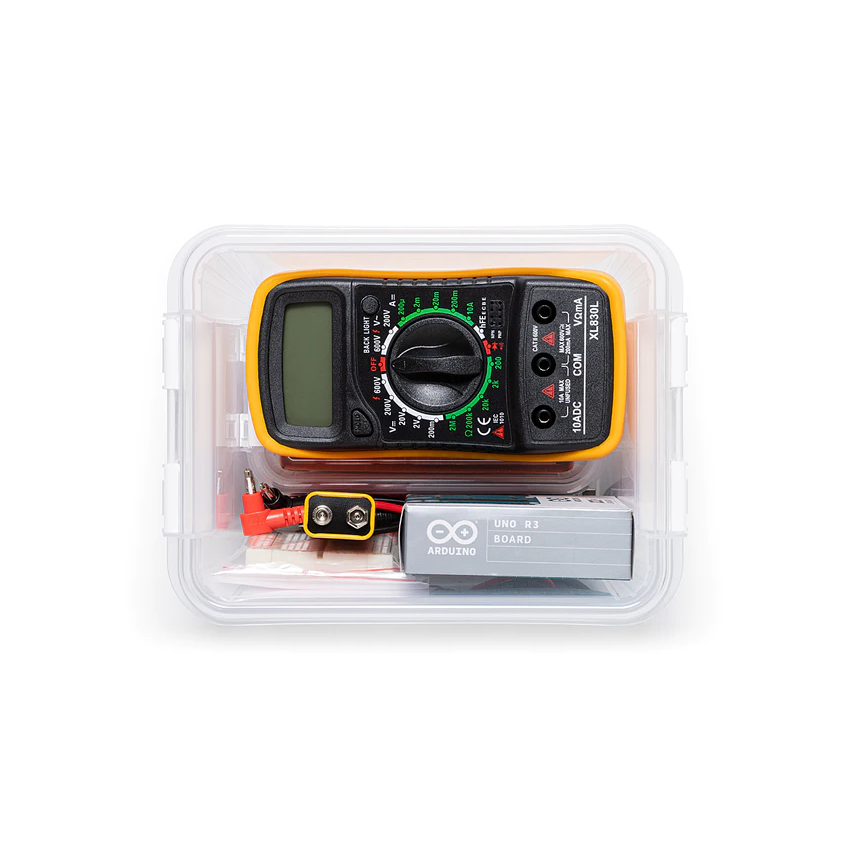Specifications:
The Arduino Student Kit is designed to provide a comprehensive introduction to electronics, programming, and coding, suitable for beginners, and is especially tailored for homeschooling and remote learning scenarios. It's suitable for ages 11 and above, with no prior knowledge required, guiding users through 11 engaging activities that introduce key concepts such as current, voltage, and resistance, while also fostering important skills like problem-solving and critical thinking.
The kit includes:
- An Arduino Uno board
- A USB cable
- A board mounting base
- A multimeter
- A 9V battery snap and a 9V battery
- LEDs in four colors (red, green, yellow, blue)
- Various resistors and potentiometers
- A breadboard
- Capacitors
- Solid core jumper wires
- Pushbuttons
- A phototransistor
- A temperature sensor
- A piezo
- A small servo motor
- Jumper wires of different types
- Nuts and bolts
Additionally, the kit provides access to exclusive online content, including step-by-step lessons and extra materials such as resources, invention spotlights, and a digital logbook with solutions. The online platform supports multiple languages, ensuring wide accessibility, and requires a computer with a USB port and internet access for programming the Arduino boards using the Arduino IDE.
Learning Resources:
Arduino Education
Applications and Projects:
The Arduino Student Kit opens up a world of possibilities for learners and educators alike, offering a pathway into the realms of electronics and programming through hands-on projects. Here are examples of projects and applications that can be built using the Arduino Student Kit, Showing the versatility and educational value of the kit:
- Weather Stations: Design and build a station to monitor weather conditions like temperature, humidity, and atmospheric pressure.
- Home Automation Systems: Create projects that control lights, fans, or other home appliances remotely or through sensors.
- Robotic Projects: Utilize the kit's components to assemble robots that can navigate obstacles, follow lines, or even perform tasks.
- Interactive Art Installations: Combine sensors and outputs to create art that responds to environmental stimuli or viewer interaction.
- Environmental Monitoring: Develop systems to monitor environmental factors such as air quality or noise levels in real-time.
- Educational Games and Tools: Craft interactive games or learning tools that make use of LEDs, buttons, and sensors for an engaging experience.
- Personal Health Devices: Prototype devices that can monitor heart rate, steps, or other health-related metrics.
- Security Systems: Implement basic security systems using motion detectors, cameras, and alarms to learn about the principles of security and surveillance.












